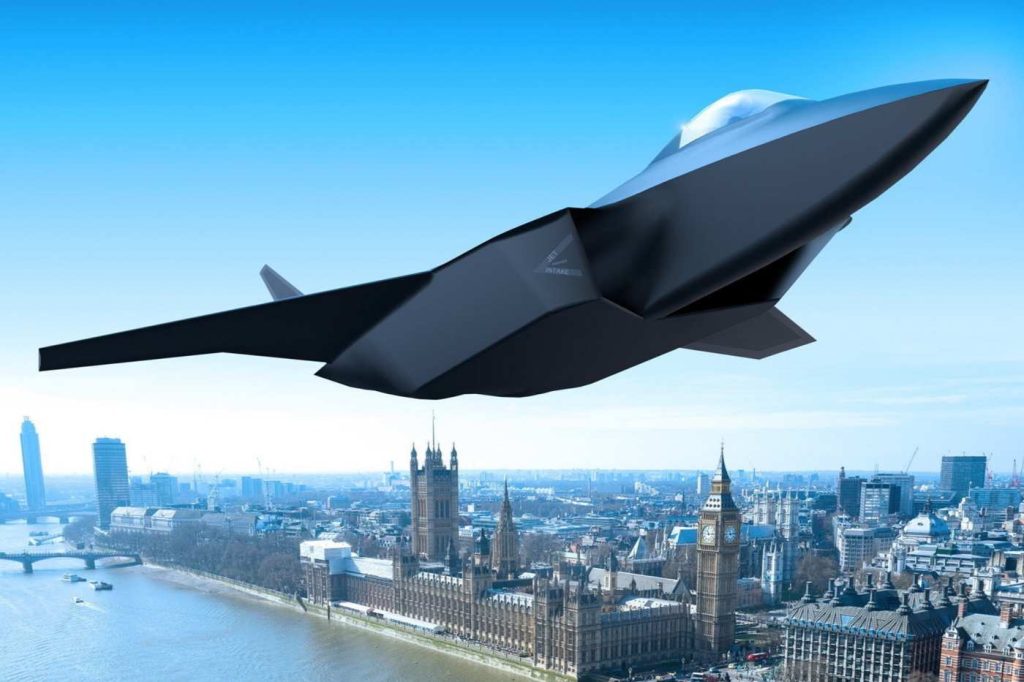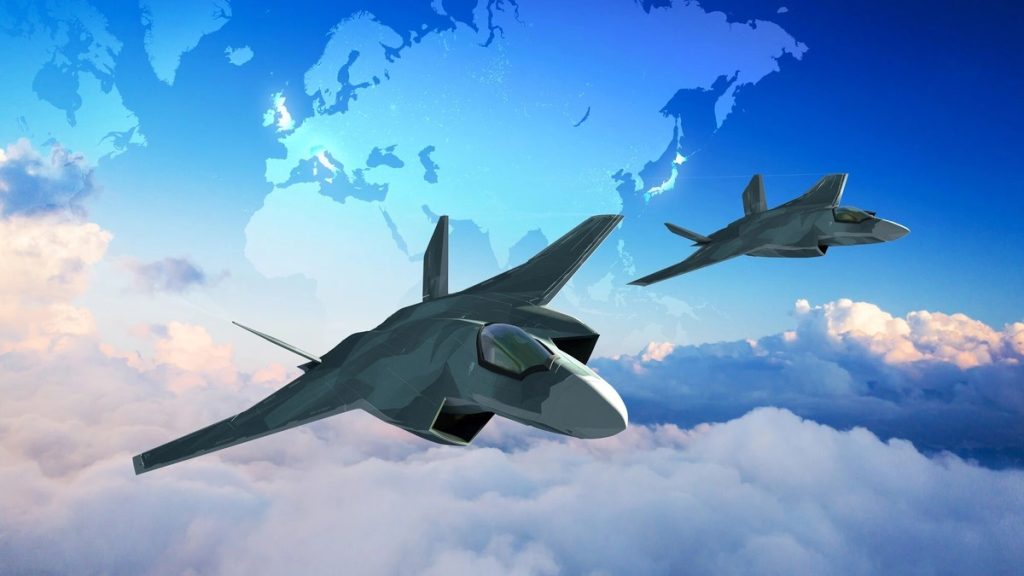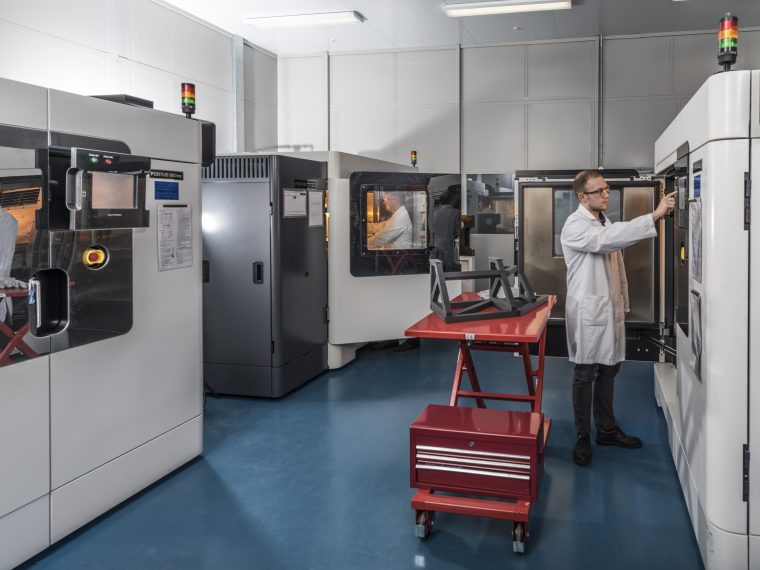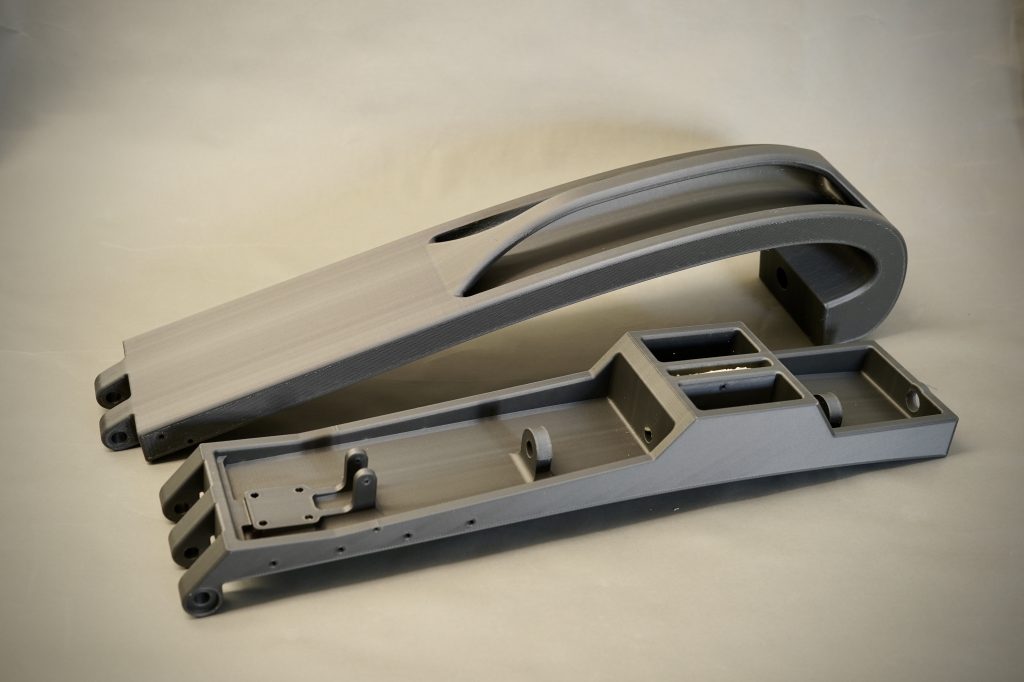The UK has signed an international treaty with Japan and Italy to develop a new stealth fighter jet, marking a key development in the Global Combat Air Programme (GCAP), and will see the UK host the government headquarters of the project.
First initiated back in December 2022, GCAP has merged Japan’s F-X program with the UK and Italy’s Team Tempest project, with the aim of producing a sixth-generation Tempest supersonic jet by 2035. This is roughly half the development time of previous generation fighter jets such as the Eurofighter Typhoon, promising significant cost savings in the process.
British aerospace firm BAE Systems, Italian defense contractor Leonardo, and Japanese manufacturer Mitsubishi Heavy Industries are the program’s leading industrial partners. The companies are reportedly investing heavily in digital design, and novel engineering and prototyping methods to meet the project’s challenging deadline.
These key collaborators are actively leveraging 3D printing technology in their production processes, suggesting that additive manufacturing will have a part to play in the production of the fighter jets. In fact, BAE has previously expressed the intention for 30% of the Tempest’s parts to be 3D printed.
“Our world-leading combat aircraft program aims to be crucial to global security and we continue to make hugely positive progress toward delivery of the new jets to our respective air forces in 2035,” commented UK Defense Secretary, Grant Shapps .
“The UK-based headquarters will also see us make important decisions collaboratively and at pace, working with our close partners Italy and Japan, and our impressive defense industries, to deliver an outstanding aircraft.”

A big step for GCAP
Signed in Tokyo during a trilateral convention, this treaty confirms the program’s leadership structure. Whilst the UK will host the government HQ of GCAP, the project will initially be led by Japan. This CEO role will then rotate between the three partner countries. The division of labor between the leading industrial partners is expected to be determined next year.
In addition to BAE, the UK effort includes participation from Rolls Royce, Leonardo UK, and MBDA UK. The UK government has already committed over £2 billion to the original Team Tempest initiative, with an additional £800 million investment from industry partners.
Japan’s defense ministry will inject ¥72.6bn ($513mn) into the program during the 2024-25 fiscal year. These investments will fund the project’s “concept and assessment phase,” which will run until 2025. Following this, the project’s development phase will be launched.
According to a press release published by the UK Ministry of Defense, the project will attract additional investment in the research and development of digital design and “advanced manufacturing processes.”

How will GCAP leverage additive manufacturing?
GCAP promises an incredibly short development period for the Tempest. The finalized fighter jet is set to be delivered in 2035, just 12 years after the signing of the trilateral agreement. In comparison, Lockheed Martin’s F-22 Raptor was developed and produced in 26 years, whilst the Eurofighter Typhoon became operational after a 20-year development period.
Given the significant lead time reductions offered by additive manufacturing, it is likely that 3D printing will have a key role to play in meeting GCAP’s 2035 deadline. Indeed, in 2020 BAE outlined that it was planning to 3D print 30% of the Tempest’s parts.
According to a report from the Financial Times, BAE is now 3D printing molds that will be used to manufacture carbon fiber components for the Tempest. Traditionally made from steel, these “mold tools” take 26 weeks to manufacture using conventional methods. Using additive manufacturing, BAE can reportedly produce a complete tool in under three weeks.
This is not the first time BAE has leveraged additive manufacturing. At the beginning of 2020, the company signed a Memorandum of Understanding (MoU) with UK-based metal 3D printer manufacturer Renishaw to improve manufacturing processes for combat aircraft systems. Through this partnership, the two companies hoped to improve performance, reduce costs, and speed up the production of fighter jets.
Later in 2020, BAE announced the installation of its fourth Stratasys F900 3D printer as part of the company’s ‘Factory of the Future’ initiative. It was hoped that the new Stratasys 3D printer would help to significantly reduce costs and lead times. Located at BAE’s Samlesbury manufacturing site, the 3D printer has since been used to manufacture prototypes, tooling, and end-use parts for its fighter jet aircraft.
Moreover, back in 2017 it was announced that BAE had entered into a partnership with Belgian precision engineering firm Asco Industries to expand its Eurofighter Typhoon advanced manufacturing program. This collaboration saw the two companies work to advance additive layer manufacturing, composite materials processing and other related technologies used in the manufacturing of Typhoon fighter jets.

Leonardo and Mitsubishi Heavy Industries’ AM history
Earlier this year, it was announced that Leonardo was working with UK-based engineering company SFM Technology, and large-format 3D printer manufacturer BigRep to 3D print components for the Royal Navy’s AugustaWestland AW101 helicopters.
The 3D printed main rotor blade restraint cradles were billed as the first of their kind to be produced using additive manufacturing. 3D printed using the BigRep Pro 3D printer, these end-use parts measure 900 x 230 x 160 mm. After extensive stress testing, SFM found that the 3D printed parts performed better than their conventionally manufactured counterparts, being both lightweight and strong.
Leonardo has also previously leveraged FFF 3D printing technology from Italian manufacturer ROBOZE to 3D print key aerospace components. Leonardo utilized ROBOZE’s ARGO line of 3D printers to fabricate a range of carbon fiber-filled nylon 6 and PEEK parts. Switching from conventional methods to additive manufacturing reportedly allowed the company to make significant time and cost savings.
Elsewhere, in 2019 Mitsubishi Heavy Industries announced the commercialization of its LAMDA directed energy deposition (DED) 3D printer. The first LAMDA 3D system, the LAMDA 200, was billed as an “entry level” 3D printer with a relatively small 200 x 200 x 200 mm build volume.
The company’s later LAMDA offerings, the LAMDA 500 and LAMDA 2000, incorporated build volumes of 500 x 500 x 500 mm and 2500 x 1400 x 1500 mm, respectively.
At the time, the company stated that it was committed to “winning expanded recognition of the metal 3D printer within the manufacturing industry, as well as on developing new applications from the user’s perspective, to make laser machining systems a core entity among its new businesses.”

Subscribe to the 3D Printing Industry newsletter to keep up to date with the latest 3D printing news. You can also follow us on Twitter, like our Facebook page, and subscribe to the 3D Printing Industry Youtube channel to access more exclusive content.
Are you interested in working in the additive manufacturing industry? Visit 3D Printing Jobs to view a selection of available roles and kickstart your career.
Featured image shows a concept image of the Tempest fighter jet. Image via BAE Systems.
منبع: https://3dprintingindustry.com/news/global-combat-air-programme-stealth-fighter-jet-enabled-by-additive-manufacturing-227169/?utm_source=rss&utm_medium=rss&utm_campaign=global-combat-air-programme-stealth-fighter-jet-enabled-by-additive-manufacturing